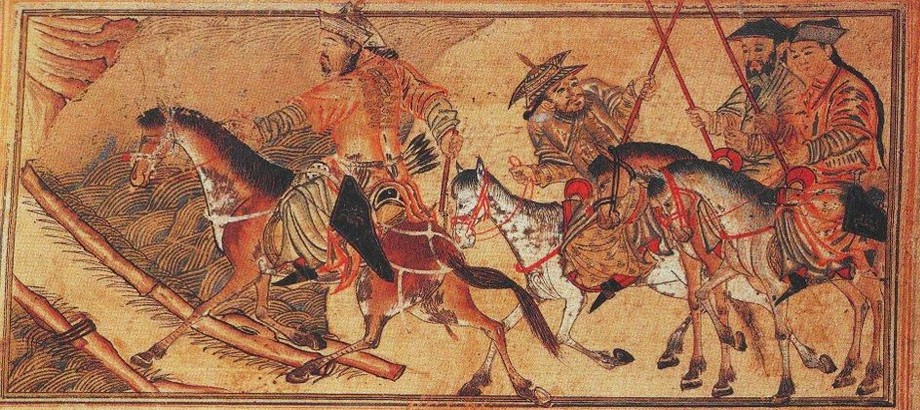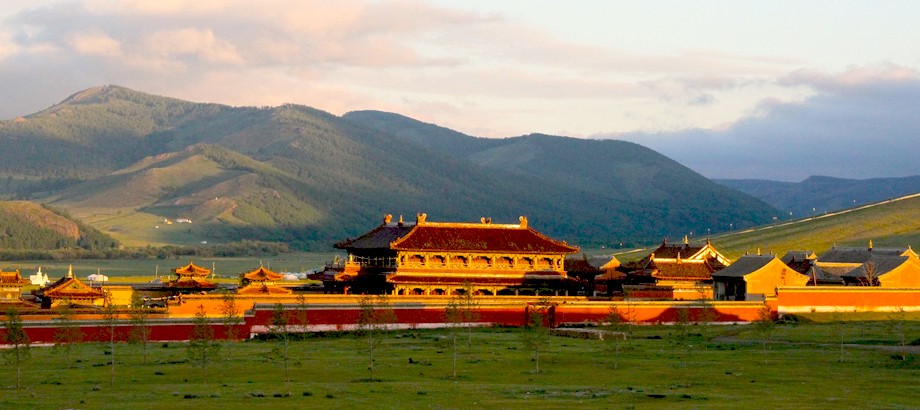The Jami' Al-Tawarikh (Compendium of Chronicles)
2020-11-30

Over centuries, the JAMI` AL-TAWARIKH (Compendium of Chronicles) through the name of its author Rashid Al-Din, a great Persian vizier, has been recognized all around the world and been considered to be private work of the vizier, and researchers from various countries have been citing parts of this this work in their publications.
It has been almost impossible not to cite from this work when one had to write about history of the XIII century, especially the Great Mongolian Empire, the Great Genghis Khaan and his successors.
This pattern still continues to be true in the XXI century. some researchers conclude that Jami Al-Tawarikh was not a private work of Rashid Al-Din, instead it was a compendium of historic compiled by him in accordance with the King`s order, and is official manuscript of medieval history of the world as well as Mongolians written in Persian.
He was commanded by Ghazan King, who succeeded Hulegu, the founder of Ilkhanatu Empire and the third son of Tolui, the youngest son of Genghis Khaan. As that time, any command by the King was seen as a wish of the Eternal Blue Sky or God, no one had a courage to refuse it. Rashid Al-Din wrote “from centuries to centuries, the true history manuscripts of Mongolians have been written and composed in Mongolian script, yet they have not been compiled or incorporated into one script as they were kept secret in various treasure reserves [of kings] and were hidden from foreigners and experts, so that no one had a chance to touch and study them. ...It continued to be same until today, when the King Ghazan enthroned to rule Iran, having King`s Crown shining [on his head], making the kings around the world envy him. As a genius being blessed with wisdom, recognizing the importance of collecting the manuscripts and incorporating them into one source, the King commanded me – a humble servant to Ilkhanate, known as a physician Rashid from Hamadan, or Fadlullah, the son of Abu` L-Haier- to collect and compile all sources of scripts that are counted to be associated with Mongolians, or even Turkec origin, trace back the family lineages, further to compile stories kept in the reserves of the Kings, as well as to be written by each of the magnificent army generals and attendants in line with the order of the King.” Further, explained his role in creating the Jami` Al- Tawarikh “when the King ordered me to edit this comprehensive compendium, I, as a least capable one among all servants, had to follow the order without raising any question. As my work to study history, legends and stories of Mongolians progressed ahead, I became more attracted to them and did my best to accomplish the order of the King, and after the extensive research work, I have classified and grouped the content of the separate manuscripts found from reserves. Having the accuracy of the all stories what I heard verified by statesmen and public servants who worked at the court, learned historians of all classes of the society, I incorporated them into the compendium. Grouping them into chapters, wrote the stories in poetic words that are easily understandable to anyone.” Thus, Persian prominent vizier Rashid Al-Din played a role of a chief editor (as we say these days).
King Oljaitu, the successor of Ghazan, highly valued the Jami` Al-Tawarikh with his complement “Until today, no body has ever created such a compendium that consisted of history and stories about people from all over the world, all walks of life and all strata or classes of the society.”
Famous scholar Bartoldyn wrote “Jami` Al-Tawarikh is a such giant history encyclopedia, equivalient to which has not been created by any of the medieval Asian or European nations”. In his book “The Rise and Fall of Mongol Empire”, Japanese renowned scholar S.Masaaki, who tries to do realistic and accurate research equally using western and oriental sources in ancient Chinese, Persian and Mongolian wrote “Jami` Al-Tawarikh is a giant ‘’Official History of Mongolians” that was written in Persian with order of Mongolians who were in power that time. ...Without Jami` Al-Tawarikh it is impossible to discuss about the history of the Great Mongolian Empire. Further, it would be much harder to recall the history of turkec-mongol nomads spread throughout the Central Asia. ... Jami` Al-Tawarikh is an unique historic source that has no equivalent masterpiece found throughout the history of humanity so far. Also, it can not be wrong to say that no other compendium that could be equal to this one in terms of scope, vision, more than these- main features and characteristics that contained in this masterpiece has been created ever since till today. As that was an unique period when Mongolians who were not recognized before were in power, it created a condition where such a special masterpiece to come into existence.
In particular, this masterpiece script witnesses that Mongolians were clearly aware of the concept “world”. The humanity finally started to create real “World history” only when Mongol era started.
The Jami` Al-Tawarikh was written 90 years later since the Great Mongolian Empire was established by Genghis Khaan (in 1206) and by this time the Empire had been expanded to be world empire. It took long time or more than 10 years (1301-1311) to write it.
An initiative to have the compendium written was made and led by Ghazan King, and after his death his successor King Öljaitü continued the initiative. In support of the creation of the masterpiece compendium, King Öljaitü said “The world is now came under our rule, we thank the Blue Sky, I emphasize this great occasion where the renowned scholars and astronomic, philosophers representing all religions, and historians from Altan horde, Sun, India Kashimer, Tibet, Uigur, Arab and Frank have gathered at our glorious court at this very moment of the time when the descendants of Genghis Khaan are in ruling power over the world” . About the team who wrote the history of Mongolians, Rashid Al-Din commented “Even the brief conclusions that are mentioned in this chronicle without much details were reviewed by me along with scholars of Altan Horde, India, Kipchak and other states. The reason for such reviews is that people from all walks of like and classes from many different states are serving the glorious court of our king.” This shows that people from foreign states were mobilized in creation of the Jami` Al-Tawarikh.
One of the Mongolians who made enormous contribution to the creation of the chronicle was Bolad Chinsank who had been appointed as an Ambassador to Ilkhanate by Qubilai Khaan. He was closest and trusted vizier of Qubilai Khaan. With his high ethics and good education, he was chosen to be Consultant on Agriculture, Army and State Services, King court service, protocol and operations related matters to the King Qubilai.
Highlighting the significant contribution of Bolad Chinsank among the other scholars who were involved in creation of the masterpiece compendium, Rashid al-Din once praised Bolad: “[The reason] that I emphasize Bolad Chinsank (from whom I received advises) who is great General, Magnificent Nobleman, led Army in Iran and Turan and managed all other countries, is that there is no one in the all corners and parts of this world who could be equally capable as him in terms of [skills] in varies of arts, knowledge about history and origin of turkec people and especially of mongols.
I would like to emphasize the efforts made by Dr, honored diplomat O.Nyamdavaa to clarify the historic contribution and fulfillment of renowned statesman Bolad Chinsank who played an important role in writing the history of Mongolians in Persian language. Through his book “Bolad Chinsank” written in 2016 and this work he introduced the historic man Bolad Chinsank. Dr. O.Nyamdavaa`s book “Ancient ties between Mongolia and India”, 2020, displays, in the fourth chapter, miniature pictures” of Mongol kings from the Jami` Al-Tawarikh kept on Rampur library in India – which is concluded as an important outcome of search that can contribute significantly towards the Mongolian studies.
by: Academician S.Narangerel



